 Ask a Question
Ask a Question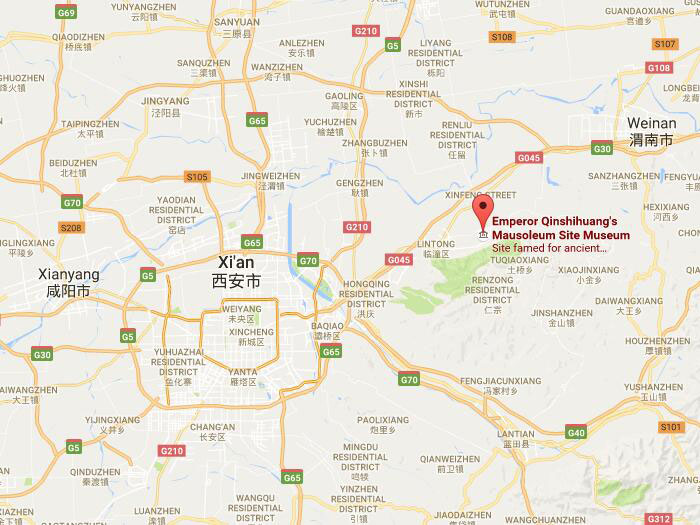

Qinglin Township, Lintong District, Xi'an, Shannxi Province, China
One of the Eighth Wonders of the World (1978); A World Heritage Site (1987); A landmark of Xian City
Terracotta Warriors in Xian, known as the eighth wonder of the world, now is a museum to display the terra-cotta warriors and horses which were made in Qin Dynasty. Qin terracotta warriors have guarded the mausoleum of Qin Shi Huang for over 2000 years. In 1987, the Mausoleum of Qin Shi Huang and Terracotta Warriors were approved by UNESCO to list in the World Heritage List. The Qin Shi Huang Mausoleum is the first and largest mausoleum in China.(built from 246 BC to 208 BC).
In 221 B.C., Emperor Qin Shi Huang of the Qin dynasty established the first centralized feudal dynasty in China. After his death, he was buried at the northern foot of Lishan Hill in the east of Lintong County. The tomb has been reduced to half its size after 2,000 years of water and soil erosion, but still impressive - 76 meters high and a fundamental space of 120,000 square meters.
One unusual detail about the construction of the tomb is that the emperor had the building begin shortly after becoming king of Qin at the age of 13. This action contradicted Confucian wisdom that a son should demonstrate respect for his father by building as impressive a memorial as possible and that a man should never plan his own funeral rites.
The tomb took 39 years and 700,000 workers to reach completion. It had pearls embedded in the ceiling to represent the stars, and rivers and lakes were modeled with liquid mercury. The tomb itself has not been opened yet.
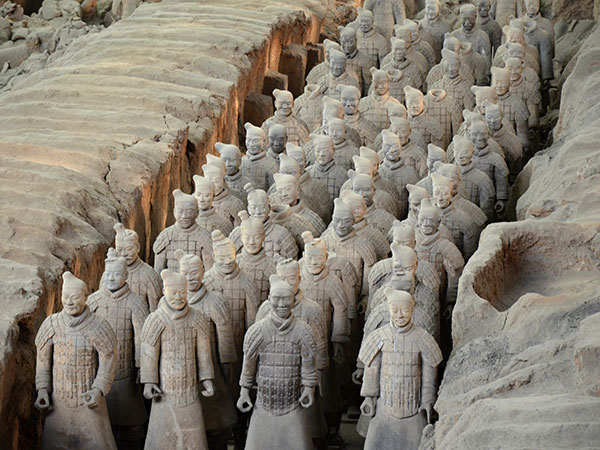
On March 29, 1974, while a severe drought hit Shaanxi Province, villagers in Lintong County, accidentally discovered the terracotta fragments when they dug wells on their fields. The villagers called the terracotta warriors “Wa Ye” as an immortal of underground world. The first time they saw the terracotta warriors, the warriors’ clothes and weapons were still in very bright colors, after two thousand years buried underground. However, when archaeologists excavated soil, affected by air oxidation, the color of the warriors gradually disappear within a few minutes, only leaving the clay color now.
From 1976 to 1978, the archaeological team added staffs to fully carry out the excavation work. On October 1, 1979, Museum of the Terracotta Warriors and Horses of Emperor Qin Shi Huang began to exhibit to visitors from both d omestic and abroad.
There are four main categories of figures in this museum: chariot warriors, infantrymen, cavalrymen, and horses. There are generals, middle ranking officers, lower ranking officers, ordinary soldiers, and armored warriors. The latter can be further divided according to their headgear into warriors with a square scarf, a cylindrical bun, or a flat bun. There are kneeling warriors as well.
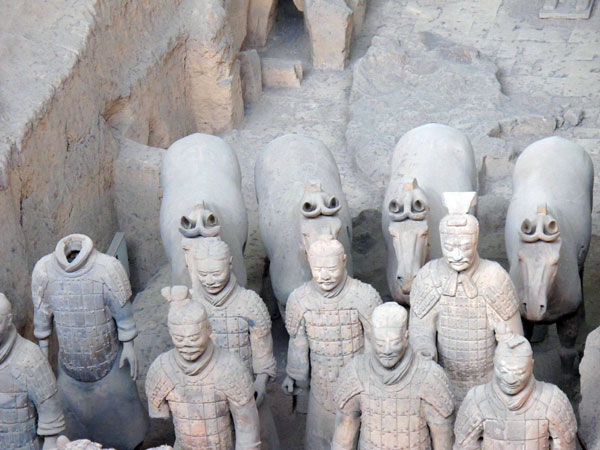
Terracotta Warriors Museum was built on top of the pit sites, located at the north foot of Lishan Mountain, 7.5 kilometers east of Lintong District, 37.5 km west of Xi'an. Opened from October 1, 1979, the Pit 1 was first opened one. Until September 1991, it has officially opened the pit 3. September 1994, the Pit 2 began to exhibit to visitors while excavating.
【Pit 1】
Pit 1 is the largest among the 3 pits. It is 5 meters deep with an area of 14260 square meters. There are over 6000 terracotta warriors and horses in annular square formation. The Pit 1 has excavated 500 terracotta warriors, 6 chariots, 24 horses and lots of bronze weapons and ironware. It was discovered by local farmers when they were digging wells above east part of the mausoleum in February, 1974. They found there are statue of people and horses in the same size of real people and horses, and the underground warriors with a history of over 2000 years was excavated and built into a Museum.
Terracotta Warriors Pit 1 is a 230 meters long, 64 meters wide rectangle pit with 5 gates. There are corridors at the east and west ends, while side corridors at south and north part. In the middle, there are 9 east to west holes separated by loam walls. There are mainly chariots infantries figures, and the chariots and infantries forms rectangular teams. At the corridors of south, north and west, there are group of warriors standing and facing outside. There three rows of warriors at the east ends. At the 9 inner holes there are 4 warriors in each wearing coat armors or armours. In the middle of holes there are chariots with horseman and two soldiers.
【Pit 2】
Pit 2 is located northeast to Pit 1 and east to Pit 3, in trisquare formation. On April 23, 1976, archaeologists found another Terracotta Warriors Pit at the south part of the east end of the Pit 1, and named it Terracotta Warrior Pit 2. It is 96 meters long from east to west and 84 meters wide from south to north, with the total area about 6000 square meters. The Pit 2’s formation is more complicate, and the types of warriors are more complete than the other 2 pits. It has the most grand battle formation among the 3 pits.
There are more than 1300 terracotta warriors and horses, over 80 chariots and thousands of bronze weapons. Among them, the terracotta general, terracotta side horse, terracotta kneeling position crossbowmen were first found. The are 4 slope doorways at both east and west side, 2 slope doorways at north side and the front gate is on the east end. There are 4 units of the layout of pit 2. The first unit located at the east part of the pit. The corridors around the unit stand 60 crossbowmen and 160 kneeling-position crossbowmen in the center. The second unit located at the right part of the pit consists of 64 chariots in 8 lines with 8 chariots in each line. The third unit is in the center of the pit including 19 chariots, 264 infantries and 8 knights in 3 lines. Each horse has knights standing in front of it with one hand holding bridle rein and another hand drawing a bow. Besides the 3 soldiers after the chariot, there are other 8 to 36 infantries. The fourth unit is located at the left part. There are 108 knights and 180 horses. They form an 11 lines rectangular cavalrymen formation.
In front each horse; there is one knight in Hu (the northern barbarian tribes in ancient China) costumes. The 108 terracotta knights were the first discovered image of knights in archaeological history. Its costume and heights were strictly imitated the image of the ancient knights. Different form other warriors, they wears round hat, tight sleeves, cross collar coat and ankle boots. The clothes of them are short and light.
【Pit 3】
Pit 3 was discovered in June, 1976. It is located to the north of the west end of Pit 1, and facing Pit 2 in east and west direction. It is about 25 m from Pit 1 and 120 m away from Pit 2. The pit is more then 300 square meters. Along with complete of the construction of exhibition hall, in Dec., 1988, the Pit 3 was excavated again. Before Sep. 20, 1989, the Pit 3 had almost reinstated its appearance. At the entrance, there is a chariot. In the pit, there are 68 terracotta warriors. From the formation of Pit 3, it looks like the general headquarter. However, it was not finished.
The lay out, arrangement of terracotta warriors, equipped weapons and unearthed relics in Pit 3 have certain characteristics which offer the materials for the research of ancient headquarters, divination, ceremony, appointment system and ceremonial clothing’s apparel and equipment. In the wars before Spring and Autumn Period, generals or leaders should charge forward in front of soldiers.
During the Spring and Autumn Period, as the scale of wars grew larger and larger, commander’s position moved to the middle of the army. In Qin Dynasty, the headquarters became an independent part, which is a great improvement of the development of military tactics. Headquarters became a independent department for making battle plan and also commander did not need to be in danger any more. It is a important symbol of the mature of the development of ancient military tactics.

【Bronze Chariots and Horses Exhibition Hall】
Bronze Chariots and Horses Exhibition Hall is located south to the Terracotta Warrior Pit 2 . The two bronze chariots and horses in the exhibition hall are the earliest, largest, and most well preserved ones discovered in China. The Bronze Chariots and Horses were unearthed from the pit which is 20 meters west to the mausoleum of Qin Shi Huang in Dec., 1980. The two bronze chariots and horses were buried 7.8 meters underground in an outer coffin. When digging out, the coffin has already decayed, the filling earth collapsed and the two bronze chariots and horses were all crushed. It is lucky that there was not found by tomb reaver, the components of bronze chariots and horses are almost complete. The two bronze chariots and horses are the earliest, largest, and most well preserved ones discovered in China. It has great significant on the research of the smelting and bronze manufacture technology and vehicle structure in Qin Dynasty.
【Bronze Weapons Exhibition Hall】
The Bronze Weapons Exhibition Hall is located at the right side after entering the gate of the Qin Terracotta Warriors Museum. There are exhibiting bronze weapons such as sword, dagger-axe, spear, tomahawk, beryllium, crossbows and so on. Among them the wugou beryllium was firstly found in China.
There are a large number of bronze weapons unearthed from the terracotta warriors pits. According to preliminary estimates, the number is close to 40,000 and most of them are bronze arrowheads. The excavation of these weapons reflects the scale and standard of the production of weapons.
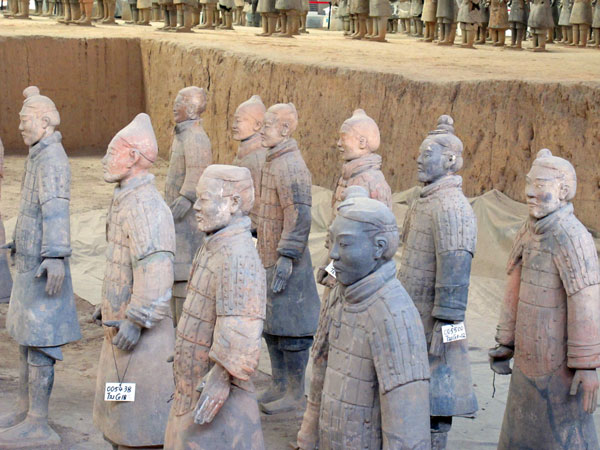
Terracotta Warriors is a real-life theme art. Its means of artistic expression is delicate, lucid and lively. The gestures and facial expressions are different between two terracotta warriors, with distinct personality and strong characteristics of that age, showing peak clay sculpture art at that time.

► Best Time to Visit: All year round, as it is indoor, especially in Autumn and Spring, while the climate is comfortable.
► Entrance ticket: 120 yuan
► Address: Lintong District, Xi 'an city, Shaanxi province
► Transportation: Passengers can take Line 5 (306), 915, 914, 307 to arrive.
► Other tips:
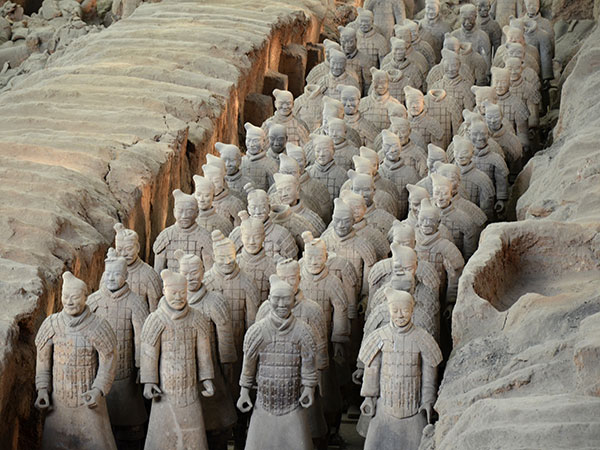
From $ 307
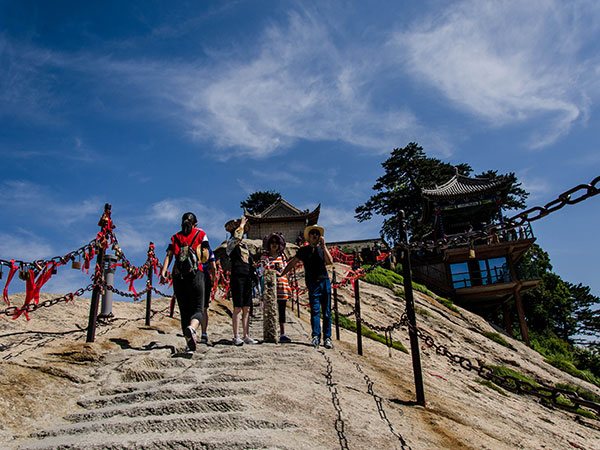
From $ 401
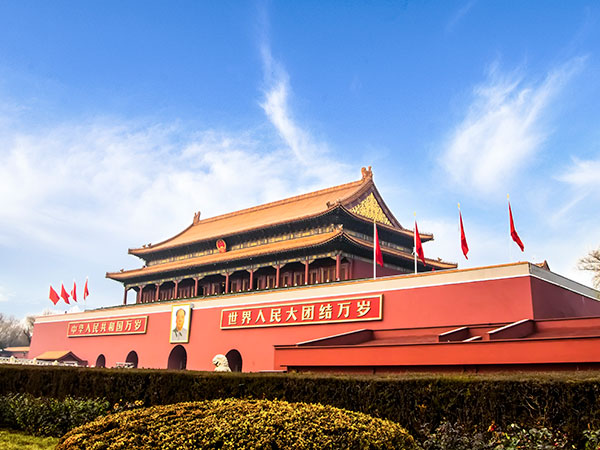
From $ 735